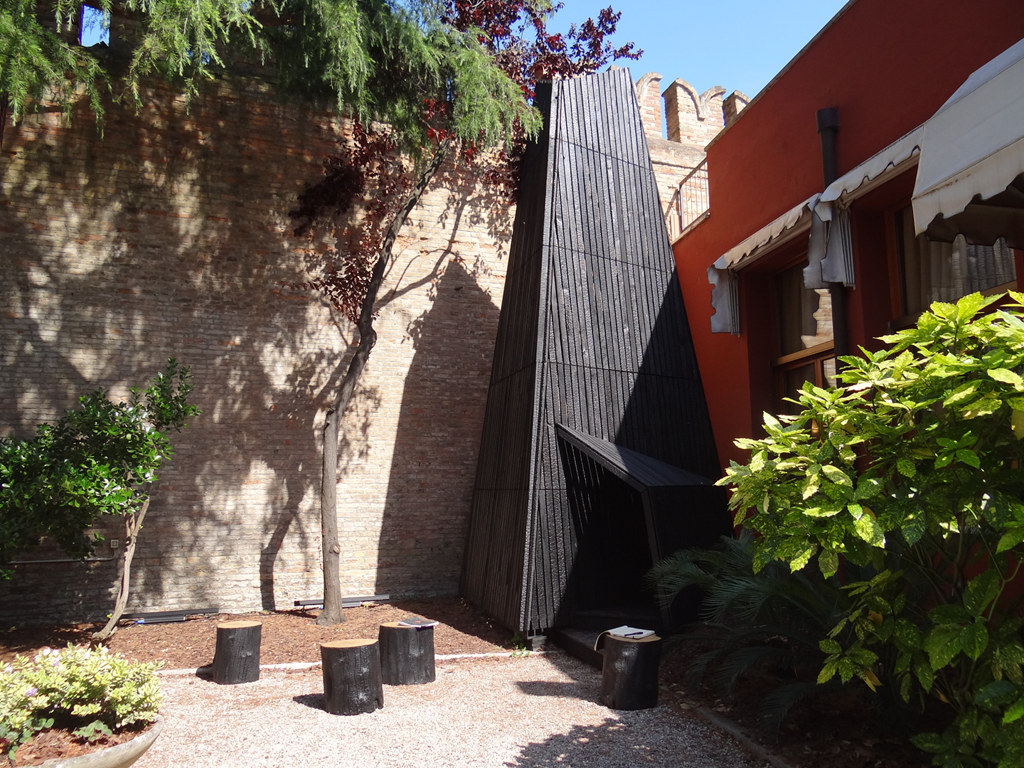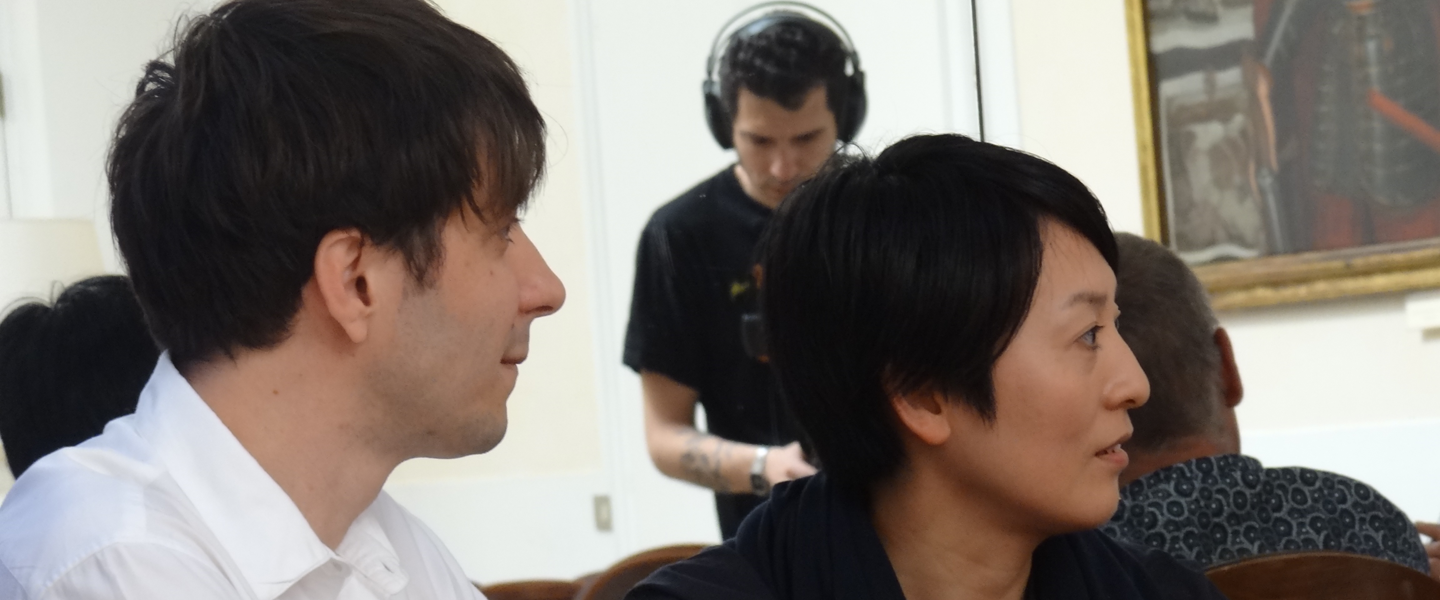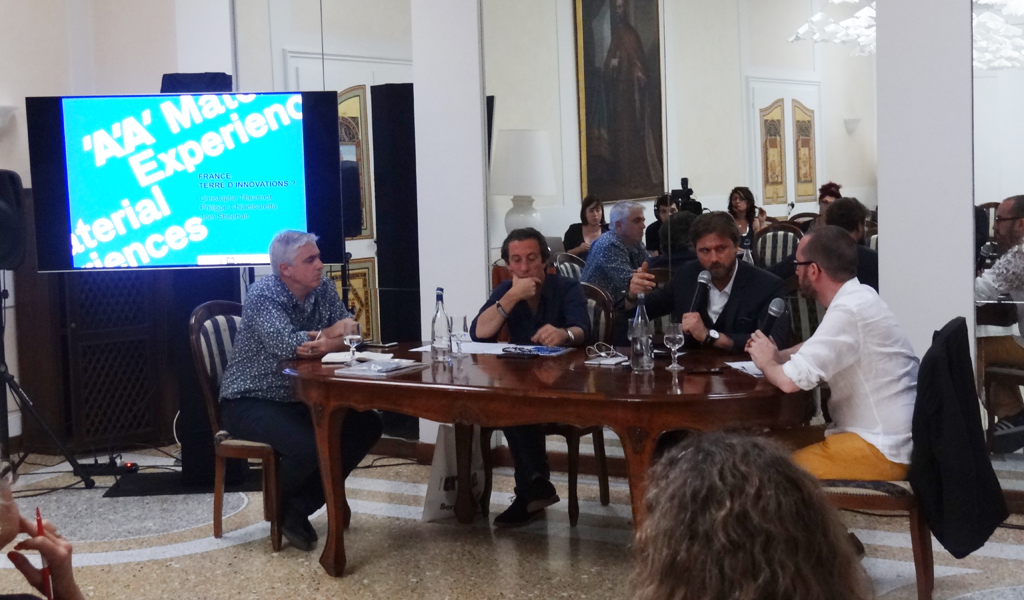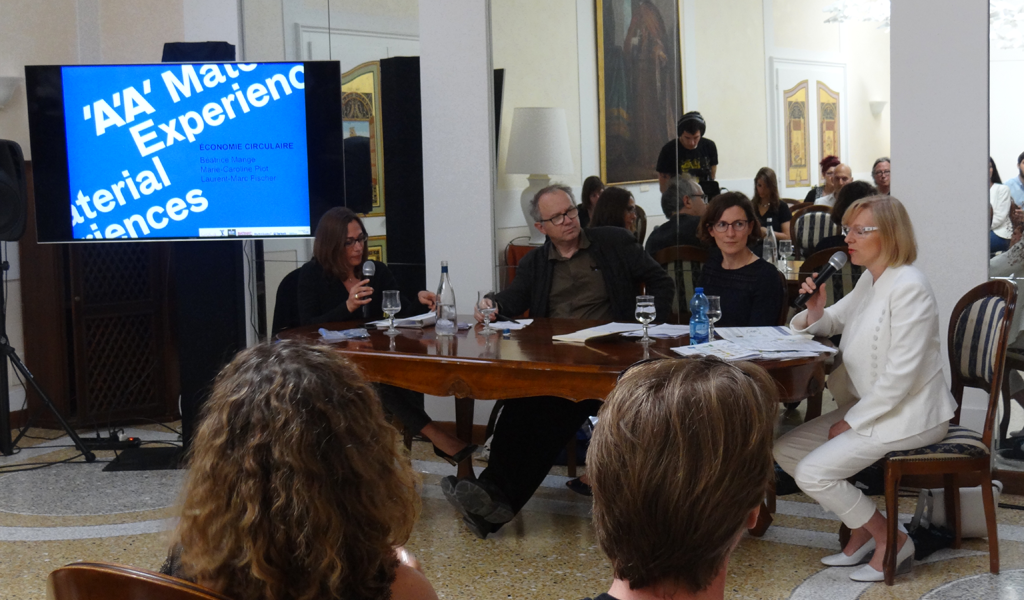Innovation in tradition
For the opening of the Venice Architecture Biennale, AA organized four discussions between architects and companies on common challenges. To talk about “innovation in tradition,” architects Hiroko Kusunoki and Nicolas Moreau met Pieter Weijnen, founder of Zwarthout, a Dutch company specialized in the Japanese charred wood technique Shou Sugi Ban.
Before specializing in the fabrication of charred wood, Pieter Weijnen had worked as an architect for over 20 years until an accident, on the worksite of his own home, put an end to his career. In 2012, in the Netherlands, he founded Zwarthout Company, which develops a Japanese charred wood technique, “Shou Sugi Ban,” which protects wood cladding from UV rays and inclement weather by means of carbonization.
Hiroko Kusunoki and Nicolas Moreau, who founded the Franco-Japanese office Moreau Kusunoki Architectes in 2011, were prizewinners, among over 1,700 participants, of the competition for the Helsinki Guggenheim in 2015, with a project clad with charred wood.
“We like to use simple materials in complex projects by upgrading them,” explained Hiroko Kusunoki. Nicolas Moreau added: “UV rays modify the wood color on a façade; maintaining its initial color requires applying products on a very regular basis. Using charred wood enables a stable color to be maintained and is efficient against exterior damage,” an advantage that can last as long as 80 years without much alteration.
If the gamut of uses for charred wood is enormous – exterior claddings and interior remodeling but also on furniture – the choice of wood is just as broad: the Naoshima Douglas fir is traditionally favored for Shou Sugi Ban and exclusively used on exteriors, the Sanuki oak is for furniture and interior walls whereas the Tonosho oak is suitable for all environments. This diversity of proposals and the appearance of each type of wood once it is charred arouses the enthusiasm of architects. However, aesthetics is not Pieter Weijnen’s primary motivation. “Choosing Shou Sugi Ban is embracing the Wabi-Sabi philosophy,” he stressed. This statement did not fail to cause a reaction from the Japanese architect Hiroko Kusunoki, familiar with this complex state of mind, derived from Buddhism, “unique, which encourages constant research and modesty on a daily basis” and that also promotes the beauty of imperfection and the work of time as well as that of men. It is a philosophy that accepts the gradual aging of charred wood.
Together, architects and manufacturer created the Tea-House Tower installed on the patio of the Navy Officers’ Club of Venice, where conferences organized by AA were held during the Biennale’s inauguration days. The 2-meter-high charred wood panels were transported from the Netherlands by truck and boat to Venice before the opening of the Biennale. Already present in France and Spain as well as in the Netherlands, Pieter Weijnen’s know-how will soon be put to work in other European countries, proof that this traditional technique is still popular today.

—
For more information, Zwarthout‘s website and Moreau Kusunoki Architectes‘ office.





